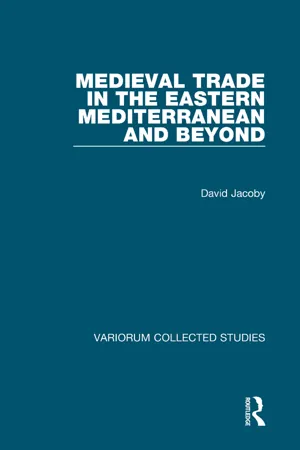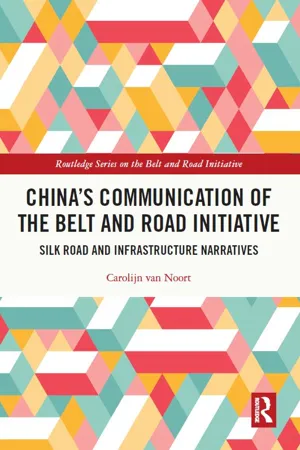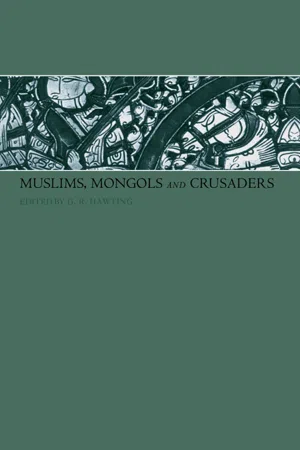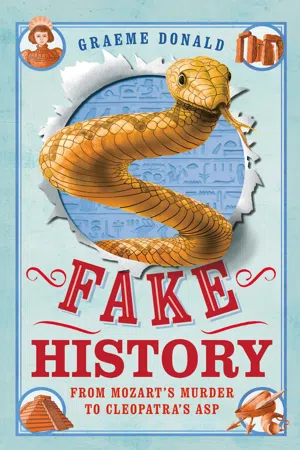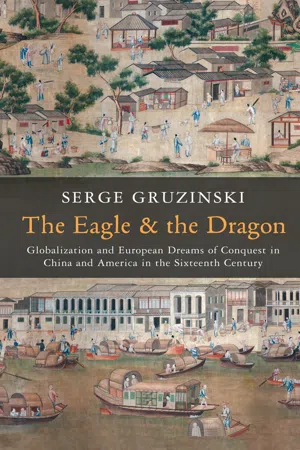History
Marco Polo
Marco Polo was a Venetian merchant and explorer who traveled to Asia in the 13th century. His detailed accounts of his travels in China and the Mongol Empire were compiled into a book called "The Travels of Marco Polo," which became one of the most influential travel books in history. Polo's writings introduced Europeans to the culture, geography, and riches of the East.
Written by Perlego with AI-assistance
Related key terms
Related key terms
1 of 4
Related key terms
1 of 3
7 Key excerpts on "Marco Polo"
- eBook - ePub
Chinese Globalization
A Profile of People-Based Global Connections in China
- Jiaming Sun, Scott Lancaster(Authors)
- 2013(Publication Date)
- Routledge(Publisher)
In 1292 the travelers, acting as escort for a wife of the king of Persia, left Khan’s realm and were back in Venice in 1295. In 1296 Marco Polo joined the Venetian forces fighting against Genoa and was taken prisoner (Cody & Sprinchorn, 2007). Apart from his travels on the Khan’s business in China, he spent three years as governor of Yangzhou (a city in China). Some Chinese sources even suggested that Polo was perhaps an official in the Salt Administration (Wood, 1996, p. 125). The prologue to Description of the World suggests that Marco Polo would have had little time for such a post, since he spent the greater part of his time traveling enormous distances on the Khan’s business. He states that he reported as requested, but also gathered as much information as he could about places, people, and customs seen en route, in order to amaze the Khan (Wood, 1996, p. 125). Polo made observations about much of Asia, including the Arab world, Persia, Japan, Sumatra, and the Andaman Islands, as well as parts of East Africa as far south as Zanzibar. He told of paper currency, asbestos, coal, and other phenomena virtually unknown in Europe at that time. He discovered many Asian splendors, describing them in sometimes credulous and exaggerated accounts, but scholars agree that his reports of the events he witnessed and the people he met are of great historical value. During the Renaissance his was the chief—almost the sole—Western source of information on the East, and, until the late 19th century, there was no other European material on many parts of Central Asia (Burland, 1970; Larner, 1999). Nowadays, businesses might use “Marco Polo” skills to succeed in the new economy that is marked by the rapidly rising global and digital marketplace - eBook - ePub
Crusading and Trading between West and East
Studies in Honour of David Jacoby
- Sophia Menache, Benjamin Z. Kedar, Michel Balard(Authors)
- 2018(Publication Date)
- Routledge(Publisher)
It is more likely that the practices of these regions have nourished a hearsay that has reached Marco Polo during his stay at the Mongol court or his travels in these regions. Back in Europe, Marco, with the help of Rustichello, has rewritten these stories under an exotic form, likely to tease Western readers. Still, it is not only that the most unbridled passages of the Description of the World are not quite fantastic, but on the contrary, that they may find surprising confirmations in the contemporary world. They echo another form of circulation and exchanges, this time on the level of fantasies born from the surprising practices of peoples of the far-away places of the world. In conclusion, Marco Polo’s book must be read for what it is, a global Description of the World indeed. It is not only that Marco Polo is able to observe or to deliver precious information, and that his account is no fantastic literature. Marco Polo also develops a coherent vision of the world, which still has Jerusalem and the Near East as a keystone. However, through the Mongol world, the Venetian had access to centuries of exchanges throughout the Eurasian roads; 39 he had access to the heart of Asia, even in its most inner, remote places. The ancient Crusader geography or biblical geography, with Jerusalem at its centre, is now expanded to the outer regions of the world, the Far East, China, not to mention the European Far West which, with Marco Polo, connects to the roads of Eurasia for the very first time - David Jacoby(Author)
- 2017(Publication Date)
- Routledge(Publisher)
6 Marco Polo, His Close Relatives, and His Travel Account: Some New Insights David JacobyThe reliability of Marco Polo’s famous travel account has been challenged time and again. It is all the more important, therefore, to submit the sparse documentary sources offering direct and incontrovertible evidence about him and his close relatives to a thorough examination. Once these documents are inserted within their contemporary context, they enable a partial reconstruction of the economic activities conducted by two generations of the Polo family before, after, and in connection with the journeys of their members in Asia. They also shed new light upon Marco Polo’s personality, lifestyle, wealth, and place in Venetian society, and substantially enhance the authenticity of his travel account.Keywords: China; Marco Polo; Medieval Trade; Mongols; Silk; VeniceThe famous Marco Polo and the account of his travels in Asia, entitled Le Divisament dou monde, have generated a considerable flow of publications over the centuries. These publications are far more numerous than those devoted to almost any other medieval topic.1 The reliability of Marco’s account and the authenticity of the information it provides have been challenged time and again, including in recent decades, and have given rise to intense debates.2 Various studies, including some fairly recent ones, have repeatedly stressed some important features of the travel account that has come down to us. First, Marco was not the author of the literary work bearing his name, produced by Rustichello da Pisa, an author imbued with courtly culture.3 Moreover, 120 manuscripts of the account survive, many of which contain additional material not found in others. Some of that material may have been recorded in writing and was deleted by the authors of later versions, while other pieces of information may derive from oral sources. As a result we cannot even determine the exact content of the work originally composed by Rustichello on the basis of information provided by Marco.4- eBook - ePub
China's Communication of the Belt and Road Initiative
Silk Road and Infrastructure Narratives
- Carolijn van Noort(Author)
- 2021(Publication Date)
- Routledge(Publisher)
Marco Polo's narrative provides insights into Khubilai Khan's reign. In comparison, Ibn Battutah's narrative refers to the last chapter of the Yuan dynasty, when the last Emperor Toghon Temür was in power. Xi Jinping has mentioned the travels of MP and IB in his speeches. In the UNESCO speech, Xi explains that: “The book Travels of Marco Polo provoked widespread interest in China” (Xi 2014 b). This comment follows a remark about Chinese influences in the West (including Chinese inventions such as the compass, gunpowder, printing press, and papermaking). In a different speech at the China-Arab States Cooperation Forum, Xi refers to Ibn Battutah: “Gan Ying, Zheng He, and Ibn Battuta were goodwill envoys for China-Arab exchanges whom we still remember today” (Xi 2014 c). Envoy Gan Ying was sent in 97 AD to visit the Roman Empire but only managed to reach the Persian Gulf before returning to China. Zheng He we know as the famous navigator from the early Ming Dynasty, and Ibn Battutah traveled the Silk Road during the Yuan dynasty. In such comments, we see how China cherry-picks events to narrate a convenient history. This case study is not about whether Marco Polo's Travels stabilize China-Italy relations, or how The Travels of Ibn Battutah define China-Morocco relations considering that Marco Polo was a Venetian, and Ibn Battutah was from Tangier, Morocco (although these stories are used toward that end). Instead, the literary reading of the travels by MP and IB is used to explore China's historical statecraft (Mayer 2018). Historical books are useful sources to gain insights into the efficacy of the Silk Road trope in global politics because they allow us to reflect on whether ideas that underpin the Silk Road remain suitable across space and time (Holden 2003, 2010) - eBook - ePub
- Dr Gerald Hawting(Author)
- 2012(Publication Date)
- Routledge(Publisher)
The book associated with Marco Polo’s name is a description of the known world rather than the memoirs or itinerary of the traveller himself; and this, together with an extremely complex and obscure MS tradition, means that we need not attach too much significance to matters that are omitted. As regards the areas the Venetians visited, the book itself makes claims that are not particularly extraordinary, and demonstrates, moreover, a readiness to distance itself from the outrageous. On several matters, such as the diplomatic and commercial contacts between Yüan China and southern Asia, the Polo texts are so well informed that it is difficult to see how Rusticello might have come by the information without an Italian who had spent time in the Far East. Marco Polo may not have travelled extensively in China, and seems to have been employed at least as much on commissions that entailed lengthy journeys by sea between China and peninsular India. In any case, apart from the two itineraries within China which bear the stamp of personal experience, the book is in large measure only loosely arranged around places which it assures us Marco or all three Polos visited; and that the Venetians were not in all the places mentioned is made quite explicit. We have, lastly, to distinguish where the book says the Polos went from the claims it makes (or some MS traditions make) for their credentials, and to confine our scepticism to the latter. The fact that Marco Polo or his co-author or later copyists exaggerated his importance while in China or on the voyage from China to Persia has long been suspected and can hardly be in doubt. But it does not in itself demonstrate that he was never in China or, worse still, never east of the Crimea.Notes
1 Earlier versions of this study were read to my colleagues in the History Department at Keele University, and to the Seminar on the History of the Middle East at the School of Oriental and African Studies, London, in April 1996.1 am grateful for the stimulating questions and discussions that followed.2 Hiroshi Watanabe (comp.), Marco Polo bibliography 1477–1983 (Tokyo, 1986).3 Martin Gosman, ‘Marco Polo’s voyages: the conflict between confirmation and observation’, in Zweder von Martels (ed.), Travel fact and travel fiction: studies on fiction, literary tradition, scholarly discovery and observation in travel writing (Leiden, 1994), 72–84 (see especially pp. 76–7, 83–4). For earlier views of the Mongols, see Gian Andri Bezzola, Die Mongolen in abendländischer Sicht: ein Beitrag zur Frage der Völkerbegegnungen (1220–1270 ) (Berne and Munich, 1974); Felicitas Schmieder, Europa und die Fremden: die Mongolen im Urteil des Abendlandes vom 13. bis in das 15. Jahrhundert (Beiträge zur Geschichte und Quellenkunde des Mittelalters, 16, Sigmaringen, 1994). Similarly, the delay in the West’s absorption of the new information from the ‘sophisticated’ East is compared with the easy assimilation of the material on the relatively ‘uncivilized’ Canary islanders: J. K. Hyde, ‘Real and imaginary journeys in the later Middle Ages’, Bulletin of the John Rylands Library , LXV - eBook - ePub
Fake History
From Mozart's Murder to Cleopatra's Asp
- Graeme Donald(Author)
- 2021(Publication Date)
- Michael O'Mara(Publisher)
Refusing Carpine’s entreaties for him to embrace Christianity, Güyük instead told him that he expected the Pope and all Western leaders to swear allegiance to him. He then sent Carpine packing with a letter, triplicate in Mongol, Arabic and Latin, to tell Innocent IV as much in no uncertain terms. In 1254, the very year of Marco’s birth, the Flemish explorer / missionary William of Rubruck met with both Batu Khan and Möngke Khan before returning to publish his forty-chapter book, The Journey of William of Rubruck to the Eastern Parts of the World, which, a bestseller in its time, is still recognized as a masterpiece of medieval geographical literature. Indeed, it was likely that it was the financial success of this book that encouraged Polo himself to venture into publishing. Polo also grossly overstates the wealth and prominence of his family in Venice. While Marco did later acquire some considerable wealth for himself, it is clear that his family were small-time trader-dealers. As to his claims of having played the go-between for the Khan and the Pope, neither the records in China nor those of the Vatican indicate any such contact; likewise, the chronicles of Yangzhou fail to mention his governorship. FROM CROATIA TO VENICE In keeping with all the smoke and mirrors surrounding the life of Marco Polo, it is hardly surprising that no one is quite sure where his family originated. It has been suggested by some sources that they moved to Venice from what is today Croatia. Some historians maintain the family were originally merchants of Korčula, an island that today forms part of Croatia but which in the thirteenth century was part of the former Venetian Republic - eBook - ePub
The Eagle and the Dragon
Globalization and European Dreams of Conquest in China and America in the Sixteenth Century
- Serge Gruzinski(Author)
- 2015(Publication Date)
- Polity(Publisher)
By 1513 Jorge Alvares had reached the Chinese coast. A year later another expedition was entrusted to Rafael Perestrello, a Portuguese second cousin of the son of Christopher Columbus, then viceroy of the Indies, Diego Colón. In the spring of 1515, at the head of three junks, Perestrello sailed for China. He was not alone. The Portuguese and the Italians had already taken the same route. It was from Canton, in November 1515, during his first stay in Asia, that Giovanni da Empoli wrote a letter describing China in a few powerful images: the towns, the population, the wealth, the buildings – they all seemed to him extraordinary. Da Empoli died off the Chinese coast in a fire on his ship, in 1517. On the Portuguese side, people were already beginning to move into a post-Marco Polo age, in which Ming China began to eclipse the Cathay of the Mongols. The scholars of Europe were much slower to update their knowledge. Their maps continued to repeat what Ptolemy and Marco Polo had written about this part of the world, while those used by the Portuguese sailors, which they jealously guarded, had taken note of the discovery: they kept the latest information about the Chinese coast and the Pearl River Delta secret. Were the New Indies in Asia? If the Spanish colonists in the Caribbean could believe they were within reach of prosperous trading societies, it was thanks to the expectations and delusions disseminated by Christopher Columbus, who was convinced he had come close to Japan and the Empire of the Great Khan. For the reasons outlined above, Marco Polo's Travels, which few had read but many had heard talked about, interposed itself between Castile and the New World. Now, in the first years of the sixteenth century, the Venetian traveller found a new public in Lisbon and Seville. Polo's book was published in Portuguese in 1502, quickly followed by a first Castilian edition, which came out within a year in Seville
Index pages curate the most relevant extracts from our library of academic textbooks. They’ve been created using an in-house natural language model (NLM), each adding context and meaning to key research topics.
Explore more topic indexes
Explore more topic indexes
1 of 6
Explore more topic indexes
1 of 4


